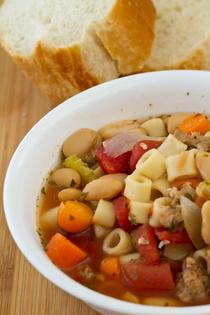Environmental Nutrition: Cutting your food waste should be a top priority this year
More and more people put sustainability at the top of their list of concerns when it comes to the food supply. Yet one of the most powerful tools for lowering your impact on the planet is simple, and within your reach: Just cut down on how much food goes into your trashcan.
According to the National Resource Defense Council, about 40 percent of all food produced in the U.S. goes to waste. About one-fourth of our fresh water goes to producing wasted food, not to mention all of the fertilizers, pesticides, fossil fuels and land dedicated to producing food that will never be eaten. Even all of that decomposing food in landfills makes a significant contribution to greenhouse gases.
So why not cut food waste for the sake of the planet? Here are our top tips:
1. Shop your refrigerator before going to the supermarket to buy more food. Use the "first in, first out" principal.
2. Put one day on the menu to "use it up." Make a soup with leftover vegetables, grains, and proteins; or create a smorgasbord with all of those leftovers dishes from the week.
3. Always take leftovers home from restaurants, refrigerate them, and use them up the next day.
4. Remember that "use-by" dates usually refer to best quality, not food safety.
5. Freeze foods if you won't have time to eat them before they expire.
6. If you must toss kitchen scraps, compost them and use them as fertilizer in your garden.
For more ideas on how to cut your food waste, visit ChooseMyPlate.gov.







